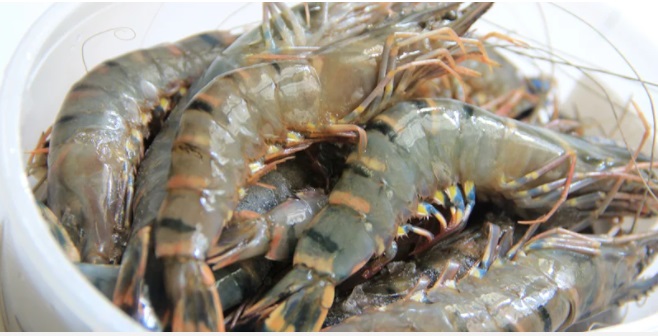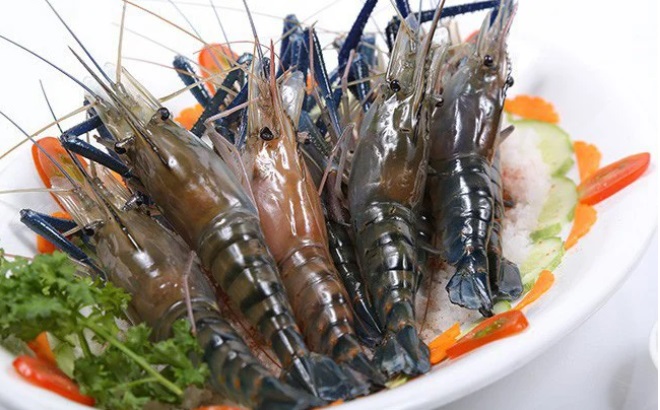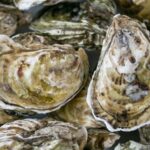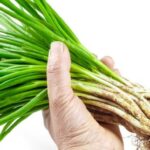Observe the Shrimp’s Legs
When buying shrimp, it’s important to check the legs to determine its freshness. If the shrimp’s joints are firm and it’s actively swimming in the water, it’s a good sign. However, if the joints appear weak or immobile, it indicates that the shrimp is dead and should be avoided.
Examine the Shrimp’s Tail
Another way to assess the freshness of shrimp is by looking at its tail. When inspecting the tail, stretch the joints of the shell and meat. If you notice that the meat has turned dark or reddish, it’s an indication that the shrimp has gone bad due to prolonged storage. It’s best to avoid purchasing such shrimp to protect your health.

Tips for Choosing Good Quality Shrimp Without Growth Enhancers
Avoid Shrimp with Slime
It’s best to steer clear of shrimp that have developed slime. These shrimp tend to curl their bodies into a round shape instead of lying straight.
To test for this, use your finger to press on the shell and move it a few times from front to back and then back to front. If you feel a gritty texture under your finger or notice slime, causing the shrimp to stick together, it’s best not to purchase them.
Moreover, with the prevalence of shrimp injected with chemicals to increase their weight in the market, it’s crucial to be vigilant. Choosing shrimp carefully is essential to avoid consuming products that may harm your health.

Tips for Choosing Good Quality Shrimp
Shrimp that have been enhanced with growth hormones often have dull coloration and lack the firmness of naturally occurring shrimp. When held, they tend to secrete excessive slime. Even if they are inexpensive, it’s best to avoid purchasing such shrimp.
Opt for shrimp with flexible and intact shells, ensuring that the head is firmly attached to the body. This way, you can be confident that the shrimp is fresh and of good quality.
According to Khoevadep
“The Great Pork Mystery: Unraveling the Smelly Truth”
Pork is a versatile meat that is a staple in many homes, with sisters often taking charge of cooking delicious meals for their families. Today’s younger generation, however, prefers to purchase their meat from supermarkets, a shift from the older generation. This preference is twofold: firstly, it ensures quality assurance and, secondly, it offers clear and concise labeling, making the selection process much simpler.
The Secret to Delicious, Sweet-Smelling, and Non-Fishy Boiled Shrimp: It’s Not Salt and Ginger, but These Two Unexpected Spices.
“Cooking the perfect shrimp may seem simple, but there’s a lot more to it than meets the eye. The secret to achieving that delicate balance between sweetness and freshness lies in the subtle art of seasoning. With the right combination of spices and herbs, you can transform this humble dish into a culinary masterpiece, locking in the shrimp’s natural flavor and leaving your taste buds craving for more.”
The Ultimate Guide to Unlocking the Secrets of Crab and Crayfish Broth: Why Your Choice of Water Matters for a Delicious Dish
Many people wonder why their steamed crab and crayfish often turn out bland, with limbs falling off and a fishy taste that makes for an unpleasant dining experience. Top chefs assert that this is due to the incorrect use of steaming liquid, which plays a pivotal role in determining the outcome of your dish.
Preserving Green Onions: Skip the Fridge and Try These Two Tips Instead for Long-Lasting Freshness
Onions are a staple ingredient in many dishes and for good reason. This humble vegetable is a powerhouse of flavor and aroma. When added to soups, a sprinkle of chopped onion works wonders to neutralize any fishy odors and enhance the fragrance of the broth. But its versatility doesn’t stop there; it’s also a fantastic garnish, adding that extra touch of flavor and color to any meal.






































